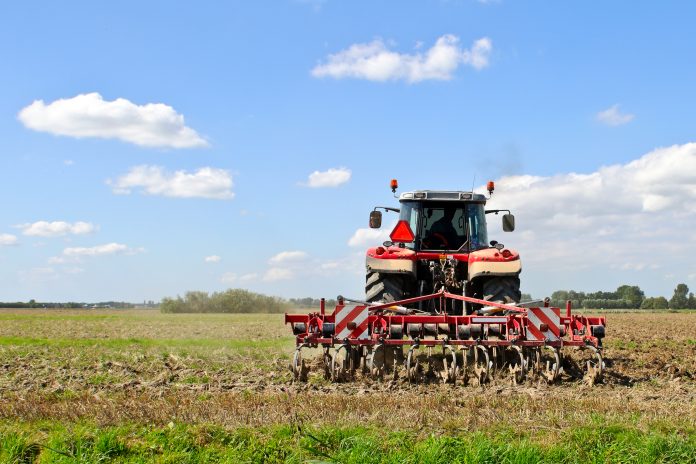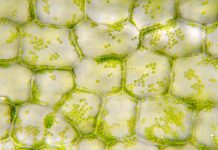University of Guelph scientists explain here that farmers and landowners are the keystone species to consider when it comes to AgrECOLture and agroecosystem sustainability
Human society depends very closely on the health and productivity of the species with which we share our environments to survive. We rely on other species to maintain shelter, food and essential resources such as clothing and tools. Many of the species humans rely on are not those that are cultivated like corn, beans, and cows, but lesser known species of mycorrhizal fungi in soils, rare pollinators, and everything else in between. Life, for humans and all other species is interdependent and, therefore, how our environment fosters and maintains life should be the main value that is to be thought of when defining the progress or state of human society.
Human impact on the environment is often thought of to be a singularly destructive or extractive interaction. Human activity such as deforestation, war, resource extraction and industrial activity have displaced, and endangered many species worldwide. This is true of agriculture as well when the motivating phenomenon behind the creation of an agricultural ecosystem and its maintenance is one of profit-driven motive. This is the system imposed by the current economic and political conditions that dictate agricultural practices to produce the highest yields by maximising how the crop inputs are converted to a commercial product.
Agroecology as a field
However, when we consider agriculture in terms of ecosystems, a very important species we must consider is the farmer and landowner. Farmers have a crucial role to play in maintaining their farm, according to agroecological principles to allow for life to flourish. Without the farmer, there would be no agroecosystem to speak of.
Agroecology as a field has developed through transdisciplinary research and participation of groups sharing knowledge from diverse fields of ecology, agronomy, social sciences and non-academic knowledge systems. Agroecology follows the scientific method of analysis, but does not stop there, it also aims to critique the political and economic structures that have produced our current agricultural practices and conventions. This approach allows agroecological ideas to be put into practice in an “action-oriented” approach (Méndez, Bacon & Cohen, 2013).
Three key concepts in agroecology are the distribution, abundance and diversity of organisms (Thomas & Kevan, 1993). Humans continue to distribute organisms as commodities around the world, constantly altering and expanding the population, and ranges of organisms used in agriculture. Agroecology shows that evaluating the success of agriculture is better done by looking at the system as an ecosystem rather than isolated species. The movement of one species can influence the competition over resources in an area, introduce pathogens, parasites, predators (Thomas & Kevan, 1993). A species may also encounter a lack of beneficial organisms to ensure its survival, such as food sources, pollinators, or in some cases lack of habitat (deforestation). Projects such as infrastructure for irrigation, nutrient drainage, must also consider the effects on the ecosystem being able to sustain itself. Ignoring agroecology in practice has contributed to the creation of zoonotic pathogens such as COVID-19. The intensification of pig farming in the initial area of outbreak, as well as deforestation leading domesticated animals in contact with wild animals is well understood to be exactly the kind of environment that new deadly viruses may emerge from mutations of already existing diseases in agriculture (Wallace et. al, 2020). It is crucial that going forward, agribusiness be led by practices that do not allow for such catastrophic disturbances of ecosystems to emerge.
The abundance of a species is defined as the size of its component’s populations. Humans have worked to create an abundance of produce, focusing on the simple strategy of monoculture of crops and monoculture for livestock. However, the biomass created by the systems is often less than what could be produced by the same land under more different farming practices or natural circumstances. Jane M.T. Pleasant’s work from 2011, ‘Paradox of the Plough’ analyses how the Haudenosaunee (previously referred to as the Iroquois) methods of land tillage were more productive than the European plow method (Pleasant, 2011). When the produce is taken away from the farm, the nutrients from the soil that were required to grow the plants have also been depleted and removed from the farm. Synthetic fertilisers add nutrients to the soil only in the short-term and are easily washed away into the surrounding water table, causing pollution (Kevan, Thomas & Belaoussoff, 1997). High-input agriculture requires more resources (chemicals, fuel, water) and less land and less human involvement in farming. Low-input agriculture requires more space and more direct human contact, but less resources (chemical, fuel, water). The need for more human contact cannot be ignored as a powerful way to determine which strategy is the most sustainable and practical for a specific region. The role of farmer, landowner, farm workers in choosing, implementing and adapting best practices for ecosystem health is key to sustainable agriculture. Acknowledging the additional time and knowledge necessary for sustainable agriculture is productive as it highlights the need to consider the ethics of labour used in to produce food.
Our third important concept in agroecology is diversity. The biodiversity and stability of an ecosystem are linked. If a species is removed from an ecosystem, it is understood that the ecosystem is less resilient, and less able to return to its previous state. The imposing global problem of climate change may be combatted with increased diversity of crops, that provide stability to an ecosystem. Monocultures are vulnerable to unpredictable weather (Thomas & Kevan, 1993). Farming practices such as intercropping, succession planting, no-till and nutrient cycling instead of synthetic inputs increase the diversity of an ecosystem and may help to out-compete weeds and provide natural predators for crop pests. (Kevan, Thomas & Belaoussoff, 1997).
The sustainability of agricultural systems
Agroecology uses scientific knowledge of ecosystems and food production to optimise the sustainability of agricultural systems. With agroecology, the role of the farmer and workers is also to serve the ecosystem of the area as well as producing a yield. Government policy and regulations should be adapted to reflect the crucial role that farmers play in fostering a healthy, sustainable relationship with our environments.
References
Kevan, P.G., Thomas, V.G. and Belaoussoff, S. 1997. AgroECOlture: Defining the Ecology in Agriculture. Journal of Sustainable Agriculture. 9:2-3, 109-129, DOI: 10.1300/J064v09n02_08.
Méndez, V.E., Bacon, C.M. and Cohen, R. 2013. Agroecology as a Transdiciplinary, Participatory and Action-Oriented Approach. Agroecology and Sustainable Food Systems, 37:3-18. DOI: 10.1080/10440046.2012.736926.
Pleasant, J. MT. 2011. The Paradox of Plows and Productivity: An Agronomic Comparison of Cereal Grain Production under Iroquois Hoe Culture and European Plow Culture in the Seventeenth and Eighteenth Centuries. Agricultural History 85:4 460-492. DOI: 10.3098/ah.2011.85.4.460.
Thomas, V.G. and Kevan, P.G. 1993. Basic Principles of Agroecology and Sustainable Agriculture. Journal of Agricultural and Environmental Ethics. 6, 1-19. DOI: 10.1007/BF01965612
Wallace, R., Liebman, A., Chaves, L.F.,and Wallace, R. 2020. COVID-19 and Circuits of Capital. Monthly Review. 72 (1) May 1, 2020.
Please note: This is a commercial profile











